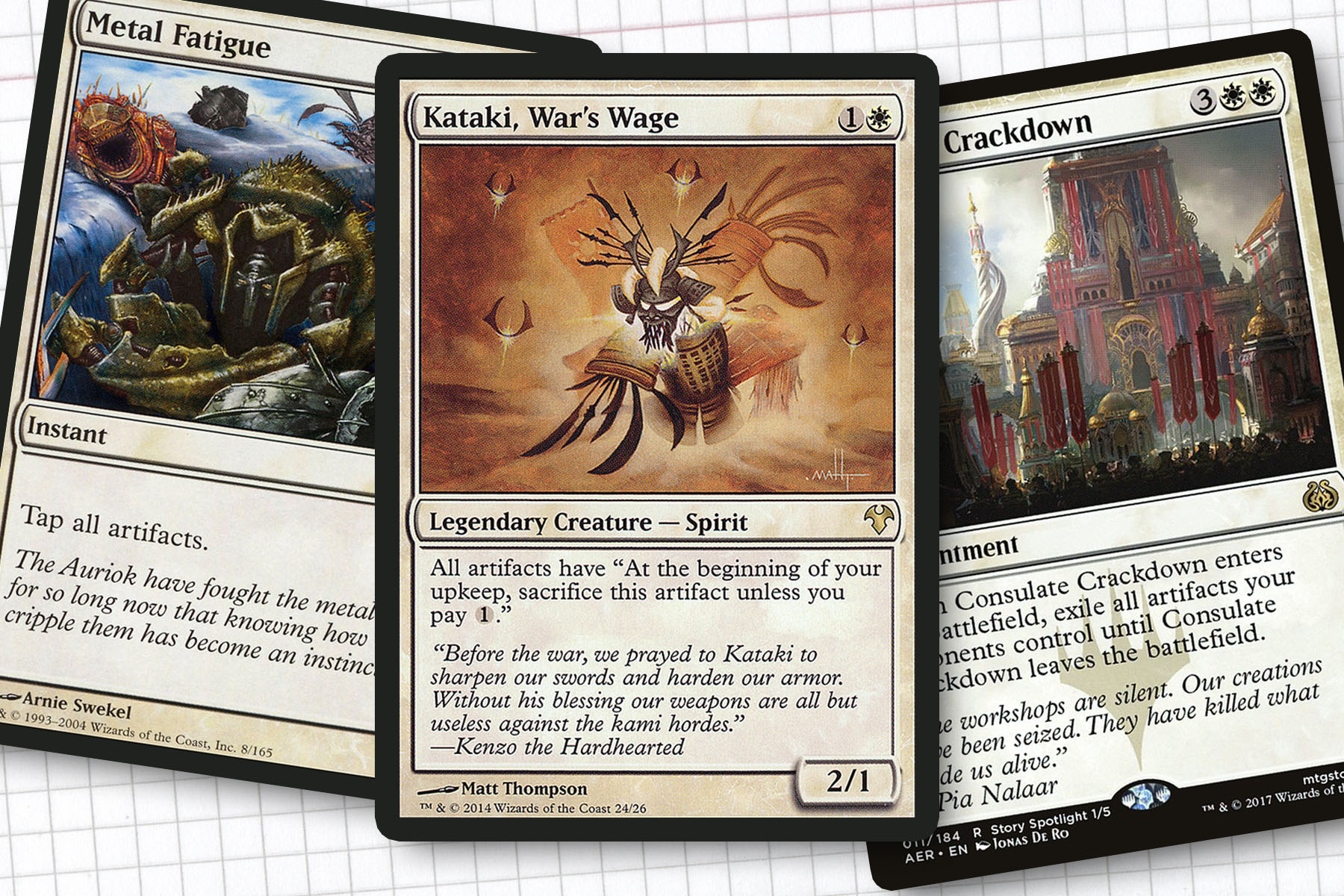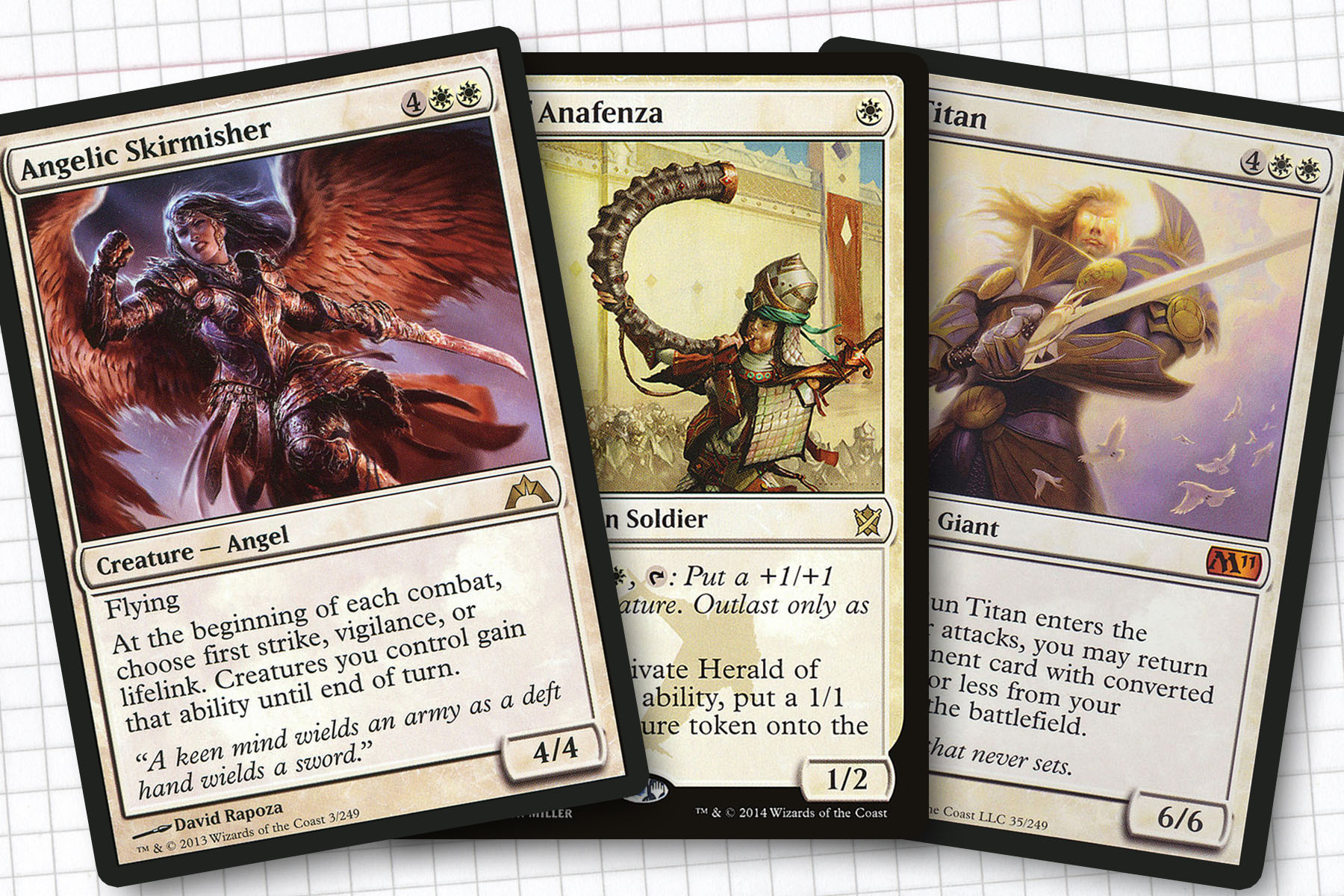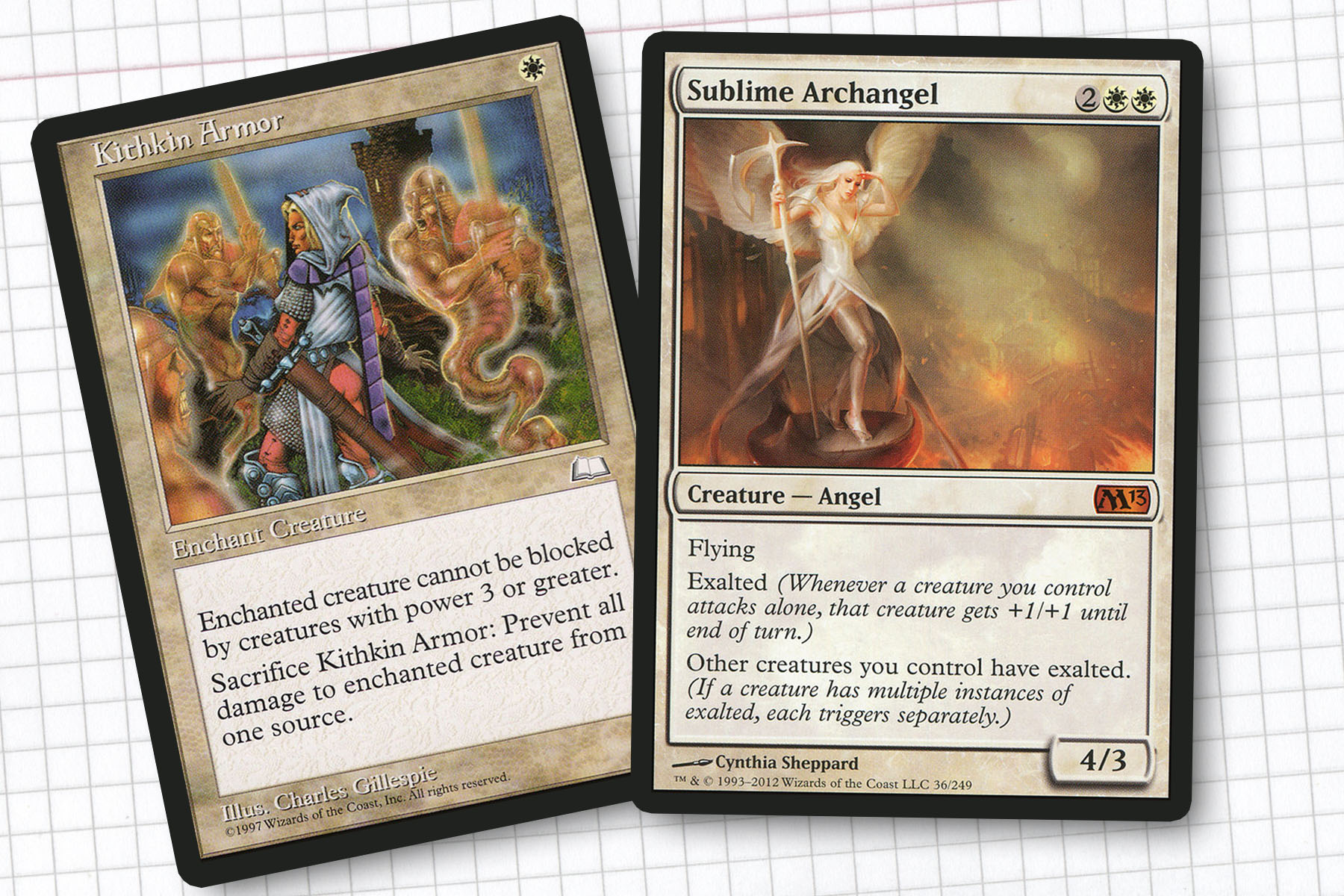As a long time fan of the Kamigawa block, I knew that in the lead up to Kamigawa Neon Dynasty I wanted to really put a spotlight on the plane. My connection is admittedly based in nostalgia, but the block came along at the right time in my life that it made an extremely strong impact. This is the fourth installment, following my look at Toshiro Umezawa, Fumiko the Lowblood, and Seshiro the Anointed in the previous weeks.
Though I could have indulged in another samurai general, I thought it wise to commit an installment to highlighting a spirit from Kamigawa. The original block circled around the conflict between the living and spirits of Kamigawa; the emperor Konda, Lord of Eiganjo stole a piece of O-Kagachi, Vengeful Kami on the night of his daughter’s birth: That Which Was Taken. This brought about an unwinnable battle for the mortals of the plane: the Kami War. This conflict was still raging many years later in the “present” of the three novels paired with the block.
On the cards side, I admittedly had a stunted view of Standard as the Kamigawa block was unfolding. I wouldn’t have my finger on the pulse of Standard until Worldwake. But one of the undeniable characteristics of the format at the time was that it was dominated by the Affinity deck living within Mirrodin block. This made Kataki, War’s Wage such an interesting card to me, because it was an answer—dare I say savior—to the artifact menace that came far too late in the timeline of that format. I doubt being printed in Champions of Kamigawa would have really changed history that much, but it sure would have signaled that Wizards wanted to do something about the issues earlier. For some in-depth context, I recommend this entry of Pretty Deece from a few years back.
All that said, this week I wanted to take Kataki as inspiration for a fun white-weenie deck that really discouraged the use of artifacts, to an alarming degree. We’ll be looking to inconvenience our opponents, go wide with creatures, and just maybe power one of them up with auras.
Commander: Kataki, War’s Wage
Creatures: Akrasan Squire, Angelic Curator, Angelic Skirmisher, Baird, Steward of Argive, Bastion Protector, Benalish Marshal, Cathar Commando, Herald of Anafenza, Kalemne’s Captain, Kami of Ancient Law, Kami of False Hope, Keeper of the Accord, Knight of the White Orchid, Loxodon Gatekeeper, Magus of the Disk, Noble Templar, Pristine Angel, Reveillark, Serra’s Guardian, Skyclave Apparition, Spelltithe Enforcer, Starnheim Courser, Stoic Farmer, Sublime Archangel, Sun Titan, Thraben Inspector, Timeless Dragon, Tragic Poet, Vryn Wingmare, Weathered Wayfarer
Enchantments: Armored Ascension, Aura of Silence, Blind Obedience, Consulate Crackdown, Darksteel Mutation, Hyena Umbra, Marshal’s Anthem, Kithkin Armor, On Serra’s Wings, Spectra Ward, Stony Silence
Instants: Generous Gift, Heliod’s Intervention, Lapse of Certainty, Metal Fatigue, Purge, Rebuff the Wicked, Sejiri Shelter, Unbreakable Formation, Valorous Stance
Sorceries: Akroma’s Vengeance, Austere Command, Cleansing Nova, Dismantling Wave, Gift of Estates, Purify, Ondu Inversion, Resurgent Belief, Sevinne’s Reclamation, Slaughter the Strong
Planeswalkers: Gideon Jura, Gideon, Ally of Zendikar, The Wanderer
Land: 28 Plains, Ash Barrens, Desert of the True, Drifting Meadow, Myriad Landscape, New Benalia, Nykthos, Shrine to Nyx, Secluded Steppe, War Room

Artfacts? I Think Not.
This is not the most powerful deck I’ve built this year, but the level of commitment into hating on artifacts makes this one of the funniest. People may not be historically lacking in their answers to artifacts, but I wanted to build something that overcorrected for every deck I’ve built that couldn’t properly address them. Much of the motivation for this deck came from wanting to take Kataki’s ability and turn it up to eleven to help to fight against just about any Commander deck with a reliance on equipment and mana rocks.
In my eyes, we are playing a rogue strategy here. Especially with a general that a lot of people have likely never heard of. My experience with the archetype tells me that it can be very potent when your opponents underestimate you, while not as strongly engineered to specifically seal up its own weaknesses. This deck turns a card type that a lot of people take for granted into a liability, and the remaining by-the-books white weenie strategy should have a less difficult board state in its way. This means that we can progress our board and gameplan unencumbered.
We will be combating artifacts not only with Kataki, War’s Wage, but mass removal spells like Austere Command, Consulate Crackdown, and Purify. Additionally, Aura of Silence is a fairly common taxing enchantment that has utility as a Seal of Cleansing. Metal Fatigue and Stony Silence are here to make artifact-reliant decks stumble at opportune moments of our choice.

Going Wide
For all of the success White Weenie has had in competitive formats, I find that most decks trying to emulate the archetype for Commander normally run a razor’s edge. Since you are trying to combat opponents on three or more different fronts while working in singleton, you can’t get away with only committing one and two mana creatures to the battlefield. As best as I can identify, the most successful executions of this strategy rely on economical token creation and recursion. I like Herald of Anafenza here, because it comes down on the first turn, allows us to cast Katak the following turn, and starts generating tokens on turn three. Similarly, Keeper of the Accord allows us to use our tokens as blockers and helpfully recover one at the end of our opponents’ turns, all with no additional mana investment.
On the recursion front, we have the staples Reveillark and Sun Titan, to allow us to recover creatures and even a few of the enchantments that make up our stalling tactics, like Blind Obedience, Starnheim Courser, and Vryn Wingmare. My hope is that this interlacing of synergy will result in the deck having a certain level of resilience, to the degree that when they do successfully remove our taxing effects we can simply bring them back through an evoke or attack trigger.
Lastly, I want to augment my creatures with curve topper creatures like Angelic Skirmisher, Serra’s Guardian, and Sublime Archangel to make the final turns of our game plan into productive alpha strikes. Angelic Skirmisher might be the most valuable of these cards, as it allows us to be adaptive and restore our life total, present as a poor player to attack, or remain defensive, while pushing through some damage.

Forming Like Voltron
The final element of this deck is the light Voltron theme. Obviously, many of the spells that mass remove artifacts also hit enchantments, just by their nature. But I wanted a back-up plan so that one or two creatures could go over or through our opponent’s defenses if need be. The package of Armored Ascension, Hyena Umbra, Kithkin Armor, and Spectra Ward all work two-fold to either make a menacing attacker or help to protect our general if the artifact taxing raises enough eyebrows. This is also where Sublime Archangel comes back into focus: if we have gone wide enough, a single creature enhanced by all the exalted triggers may be more potent than attacking with the whole team. This is especially true if we need to keep a solid army of creatures back on defense.
Mono-white can be a difficult color identity to build around. Even though Wizards has made strides in the last few years to try to invigorate what white is capable of, it can often be difficult to feel like you have a fully formed idea that works backwards and forwards. What I like about the Kamigawa block is that it gave us a lot of really weird legendary creatures. Objectively I don’t know that Kataki, War’s Wage reads as being that powerful, but in a format such as Commander, where artifacts are taken for granted, adding on this small tax can uproot strategies. These are the kinds of synergies that I look for in a general and that I appreciate when other players find in their own generals.
We have one installment left, so I will see you all in the new year. I hope you stay safe and come back.
Ryan Sainio is a Graphic Designer who writes about EDH and the EDH community. He has been playing Magic: the Gathering since 7th Edition in 2002 and values flavorful and fun gameplay over competitively optimized decks.

